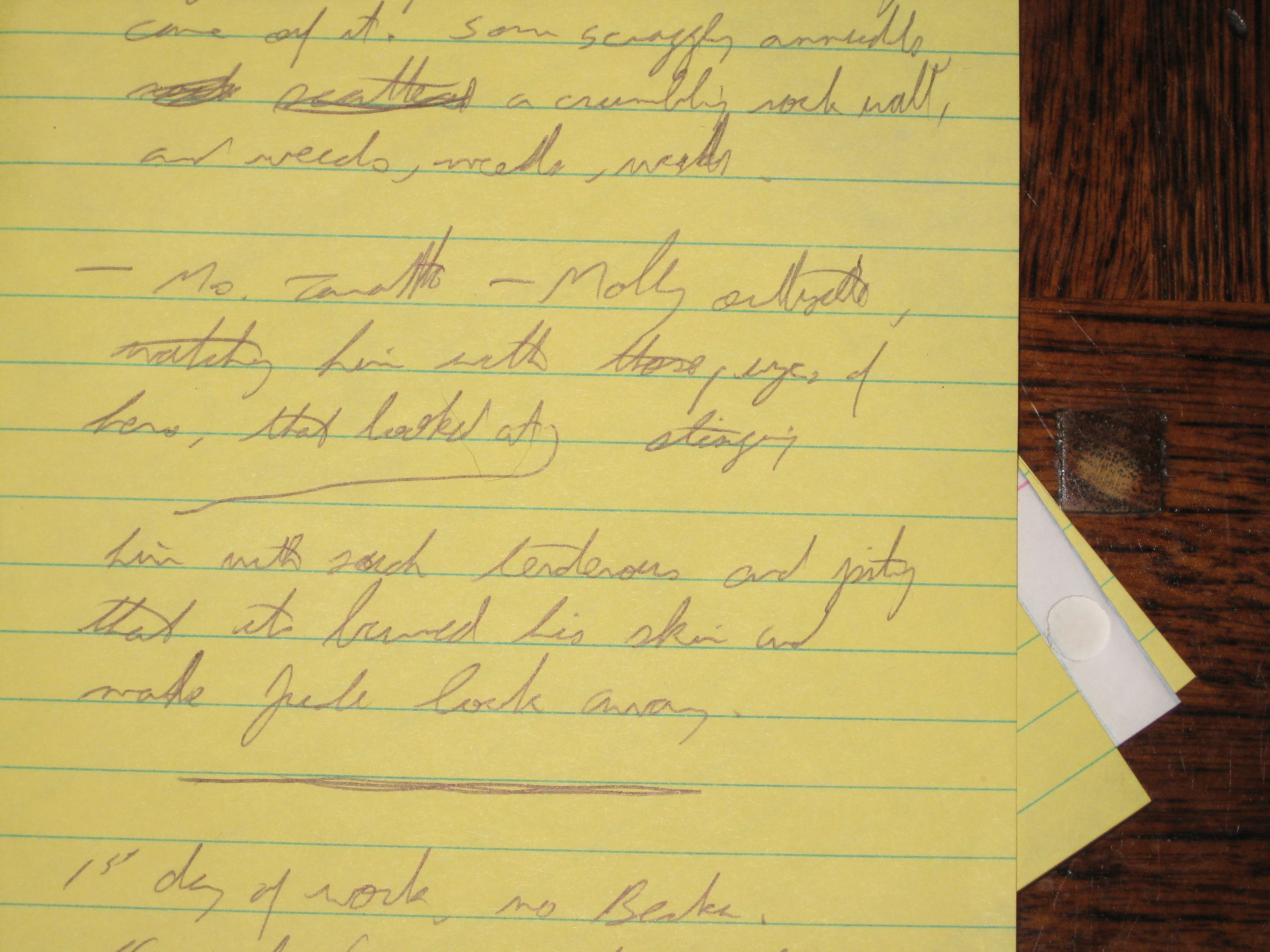This week we’re all about the revision process here at Jamespreller.com. I’d say that we’re celebrating revision . . . but let’s not get carried away. It’s not really a party.
I’ve found that one of the keys to revision involves a mental trick: I try to never allow myself to think I’m done. So I reserve some energy, some well of enthusiasm, for every writing project, no matter how close we get to publication. Because once I let down my guard to relax, that makes revision almost impossible and truly heart-breaking.
Last week I needed room to spread out, so took over the kitchen table upstairs. Even though the book, Before You Go, feels thisclose to finished — this stage marks the third time through the entire “finished” manuscript (not including dozens of edits I’ve made along the way) — I still needed to take one last macro look at the entire thing.
Often revision is confused with little tweaks and fussy details, but at it’s core revision is exactly that:
Re + Vision. To see again. It’s like a painter stepping back from the canvas.
On the table, on the lower left there’s a marked-up manuscript that was returned by my editor, Liz Szabla. I love Liz, and I’m grateful every day that she’s in my life. But if there’s ever a moment of strain in our friendship — a silence over the phone, a clipped response — it’s during the revision process. Because I want to hear only how wonderful I am, and that my book is perfect. Liz has a different agenda, and we have to work things out. Really listen, really hear, and in my case, most of all, to trust.
That’s why it’s so vital to still have a reserve of energy in the tank. This is the 18th mile of the marathon, the dreaded wall, and it’s tempting to give up.
I grabbed a stack of index cards and wrote out the basic events of each chapter. This, again, is what I think of as Big Picture Revision or Macro Revision. I’m looking at Chapter 8, for example, and thinking about sliding it up to Chapter 4, actually grafting it on to the first few pages of Chapter 4, while eliminating large pieces of old Chapter 4. This, naturally, will effect the content of chapters 5, 6, 7 and I’ll need to really examine those, too. For example, in the book Jude meets Becka outside on a bench at Jones Beach. This has been their first conversation since the first draft of the book. I probably wrote that scene ten months ago. And while the dialogue has evolved over time, the basic meeting has been unchanged from the beginning. But now at the 11th hour I’ve decided to blow things up, flip it around, to turn their second conversation into their first meeting. It feels more dramatic, and more true (more accidental, less intentional).
I didn’t ask Liz for permission for this — that’s not how she edits — but I did bounce it off her over the phone for a reaction. As always, while Liz will react to concepts, she reserves the right to see how it works on paper.
Back to the photo: The yellow lined pages come from various notes I’ve made over the past months, isolated ideas that have come to me, often while I’m in supposed to be asleep in bed. Very sloppy, in a kind of shorthand. Again, revision: These pages represent new ideas, new scenes or paragraphs or moments, that I may insert into the story.
I was thinking about a failed memorial garden in Jude’s backyard. To translate my lefty scrawl:
came of it. Some scraggly annuals,
a crumbling rock wall,
and weeds, weeds, weeds.
The second and third text blocks represent Jude’s awareness of a neighbor’s watchful eyes, and it’s a new layer I’ve added to the story. Extremely minor, but it needs to be there . . . it tells us something important about Jude, I think. It still remains to be seen how it works on the page, in the context of the entire book.
It reads:
— Mrs. Taranto — Molly, outside,
watching him with those eyes of
hers, that looked at
[edit: the next word is stinging, to be inserted before eyes]
him with such tenderness and pity
that it burned his skin and
made Jude look away.
More, later. As always, thanks so much for stopping by.









